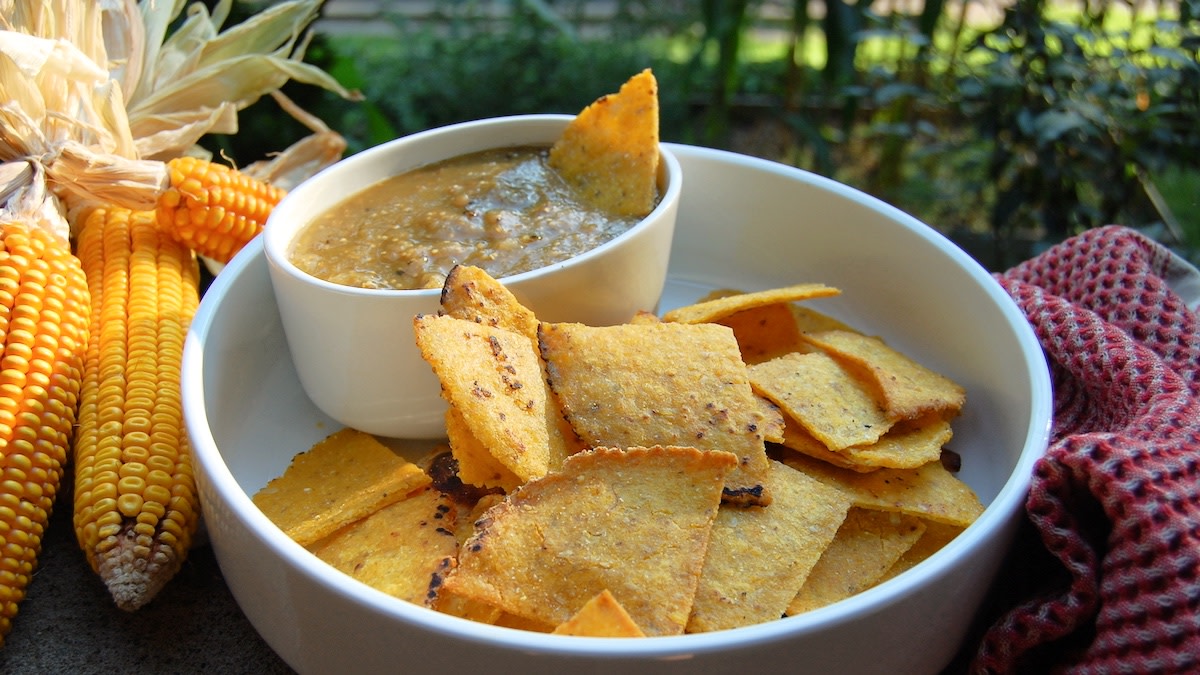
Around 500 years ago corn (or maize) was introduced to Europe through the Columbian Exchange with Mesoamerica. It quickly took hold as a staple crop in places like Italy and Spain which were subsequently inundated with an epidemic of the vitamin-B deficiency Pellagra. Over the next 200 years, doctors were stumped as to the cause, with many theorizing that it was due to a toxin in the corn that their patients were eating. But we now know that the true cause of the disease was their lack of knowledge on how to properly process corn for maximum nutrition.
The indigenous peoples of Southern Mexico who first bred corn from a wild grass developed the process of cooking it in an alkaline solution which unlocks nutrients like vitamin B that are not bioavailable in raw corn. This process is known as nixtamalization. The word “nixtamal” comes from a combination of the Nahuatl words for “lime ashes” and “corn dough” which describes the original method of creating the alkaline solution using hardwood ashes to raise the pH of the water.
Today, most nixtamalized corn is processed using calcium hydroxide which is sold as “pickling lime” in the US. Nixtamalized corn is not only more nutritious than raw corn, but it also has a unique flavor and texture that lends itself well to making tortillas, corn chips, tamales, and more. This process might sound a little bit intimidating, but it’s really very simple. Read on to learn how to process your very own nixtamal so you can impress your friends and family with a pile of homemade tortillas!
Pickling Lime (Calcium Hydroxide) Nixtamal
- Use a kitchen scale to weigh your corn (write down the weight).
- Weigh out your pickling lime, aiming for about 1% of the weight of your corn.
- Pour your corn into a large pot and cover it with at least 2 inches of water.
- Bring the water to a boil and let it cook for about 15 minutes.
- Add the pickling lime and stir in to make sure there are no clumps. The corn should immediately begin to smell like fresh tortillas.
- Boil the corn/pickling lime solution for about 30 minutes then, pull out a kernel and press down on it with a fork to gauge the tenderness.
- When the corn is tender enough to smash under a fork, cover the pot and turn off the heat.
- Let your corn/pickling lime solution sit in the covered pot overnight (about 12 hours is ideal).
- After 12 hours, pour your corn through a strainer and rinse off the pickling lime solution.
- Work the corn between your hands to rub off the hulls of the corn, which should be floppy and almost slime-like at this point.
Once the hulls are removed, you are left with clean nixtamal or hominy which is ready to use however you like!
As I mentioned above, the first people to nixtamalize corn did so using wood ashes. In my experience, this method makes a gigantic mess, and you end up with the same product as the pickling lime version. But it can be a fun project for folks looking to connect with the old ways.
Wood Ash Nixtamal
- Burn a nice pile of hardwood like hickory or oak in a chiminea or fire pit (make sure to clean it well beforehand and don’t burn anything that you wouldn’t want to end up in your food).
- Once the fire is burnt down, collect the ashes and strain them through a sifter to produce a fine powder of ash (Leave any larger pieces behind).
- Measure out your corn by volume, add it to a large pot and cover with at least 2 inches of water.
- Measure out an equal amount of ashes to the corn by volume. For example, for two cups of corn, use two cups of ashes.
- Bring your corn to a boil and cook for about 15 minutes.
- Stir in the ashes (be careful not to spill this in your kitchen because it will make a serious mess).
- Boil the corn/wood ash solution for about 30 minutes, then pull out a kernel and press down on it with a fork to gauge the tenderness.
- When the corn is tender enough to smash under a fork, cover the pot and turn off the heat.
- Let your corn/wood ash solution sit in the covered pot overnight (about 12 hours is ideal).
- After 12 hours pour your corn through a strainer and rinse off the wood ash solution (I recommend doing this outside so you don’t clog your drain with wood ashes).
- Work the corn between your hands to rub off the hulls of the corn, which should be floppy and almost slime-like at this point.
Your wood ash nixtamal/hominy should have a delicious corny-smoky smell and will lend itself really well to tortillas and tamales.






Conversation